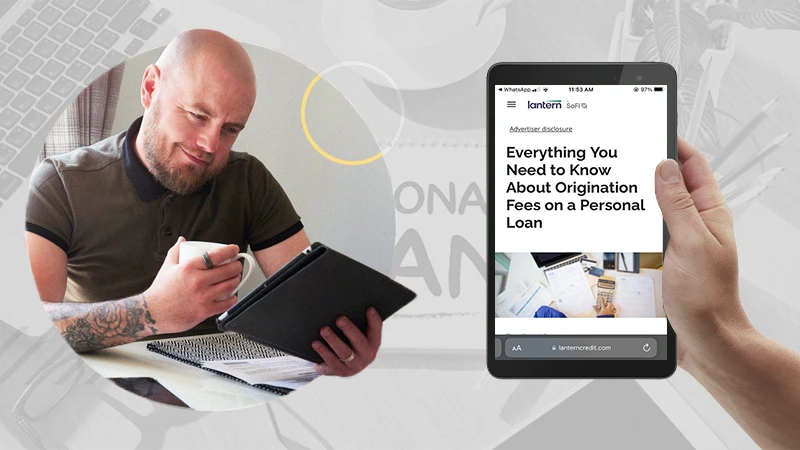How You Can Spruce up Your Finances
When your house gets cluttered and messy, what do you do? You clean it. You set aside some time to wash dirty dishes, do laundry, dust shelves, vacuum carpets, and mop floors until the whole house is much nicer to live in.
You should take the same approach with your personal finances. When your finances are looking rougher than you’d like, especially after the winter holidays. You need to set aside some time to spruce them up. How?
Cancel Subscriptions
How many paid subscriptions do you have? Do you need all of them? Go through your credit card statements to see how many recurring subscriptions you’re paying for. Write them all down and determine which ones you want to keep. Cancel the remainder and save your money.
If you still like the subscription, but you’d like to save money, you can always downgrade your services. So, instead of having a premium Netflix subscription at $19.99 per month, you could switch to a Standard or Basic subscription to pay less. Or instead of using Spotify Premium, you could opt for the “Spotify Free” plan. It will come with ads and fewer features, but it won’t cost you a thing.
Negotiate Bills
You might be able to negotiate your bills and get lower rates. You can try this for your internet, cable, phone, and car insurance bills. Call up the service providers to see whether they can offer you a better deal to maintain your loyalty. If you don’t have the time or energy to talk to customer service representatives and discuss your payments, you can try to use a bill-cutting app like The Rocket Money, Trim, or Billshark.
Negotiate Interest Rates
Are your credit card interest rates a little on the high side? They don’t have to be. You can contact your credit card companies to see whether they can lower your rates to make your monthly payments easier to contend with.
The average American doesn’t just have one credit card. They have between 3 to 4 credit cards. If you’re just like the average American, and you have multiple credit cards sitting in your wallet, you should be strategic when negotiating your interest rates.
Start with the credit card that you’ve owned for the longest. Call up the provider and calmly discuss the possibility of lowering the amount of interest on the card. You’re most likely to succeed in your negotiation when you choose the oldest card — you’ll have an extensive credit history and bill payment history to back up your negotiation.
Choose the second oldest card for your next negotiation. Continue down the line, leaving the newest credit card for last.
Increase Your Credit Limits
Has your bank or credit card company offered to increase your credit limit recently? Have you been sitting on this offer, wondering if it’s the right move? This might be a good time to accept it.
What’s the benefit of increasing your credit limit? It boosts the amount of available credit that you can borrow from, which could come in handy for future purchases — especially for emergency expenses. The increase creates more distance between your current balance and the set limit, reducing your risk of using all of your available credit and maxing out your account.
Increasing your credit limit also lowers your credit utilization ratio, which can have a positive impact on your consumer credit score. A strong consumer credit score can lead to better financial opportunities, like lower interest rates, lower security deposits, and higher chances of loan approvals in the future.
Check for Unnecessary Fees
Look through your bank statements to see whether you’ve been collecting any fees or charges that are easily avoidable.
Paper Statement Fees:
Banks typically charge customers that receive bank statements in the mail. It’s very easy to avoid these fees. Go paperless. Contact your bank to make the switch. Or go to your online account and change the account setting to edit your statement preferences to “paperless” or “e-statements.”
Out-of-Network ATM Fees:
You might notice that you’ve gotten a lot of out-of-network ATM fees. How can you avoid this? Only withdraw funds from ATMs that are in your bank’s network. Your mobile banking app should let you know where in-network ATMs are located. If you’re nowhere near an in-network ATM, and you need to make a withdrawal, you could ask for cashback at a retailer when you’re at the register.
Late Fees:
You might notice that you’re consistently collecting late penalties because you keep forgetting to pay your bills on time. Avoid this problem by automating your bill payments. The payments will come out of your account on the due date.
Monthly Maintenance Fees:
Sometimes, monthly maintenance fees are triggered when accounts dip below the minimum deposit amount. You can avoid this fee by trying to keep your account at this threshold. Check your account policy to see what that threshold is.
Make a Budget
Building a personal budget can help you organize your expenses, find more savings and avoid financial mishaps — like spending beyond your means and putting your checking account into overdraft. The easiest way to build a budget is to download a budgeting app and follow the step-by-step instructions.
Choose an app that will sync with all of your financial accounts, like your checking accounts, savings accounts, credit cards, and loans. This feature will give you an accurate view of your income and expenses.
Prepare for Emergencies
You might not be financially prepared for emergencies. If you were hit with an urgent, unplanned expense, you wouldn’t have enough savings to pay for it. You would have to consider an alternative to tackle it.
In that case, you could use one of your credit cards. That would let you pay off the expense quickly and then pay down the card’s balance through your regular billing cycle. Or you could try to apply for a small online loan available in your home state. As long as you met all of the qualifications for the small online loan, you could fill out an application in a matter of minutes. If your application is approved, you can use the funds from the online loan to resolve the emergency expense. Then, you can focus on a repayment plan.
The best way to prepare your finances for emergencies is to put together an emergency fund. So, look through your personal budget to see how much you can set aside for emergencies. Open up a savings account to act as your emergency fund. Once the account is open, you can add those budgeted contributions to it. Repeat this step every month and watch your safety net grow.
Automate Savings
How often do you contribute to your savings? Do you contribute regularly or sporadically? If the latter is your answer, you should start automating contributions from your checking account to your savings account. This is a great strategy when you’re trying to build up an emergency fund. By automating your contributions to the fund, you’ll guarantee that it grows quickly over the course of a year.
Set Up Account Alerts
Account alerts will send you notifications via email, phone call, or text message when a specific occurrence happens to your bank account. These are some of the alerts that might be available to you:
- Low balance alerts
- Large purchase alerts
- Large ATM withdrawal alerts
- Profile change alerts
- Unusual account activity alerts
These alerts can notify you of banking problems that need your attention right away. For instance, a low balance alert will let you know that the funds in your checking account are dwindling and that you need to be cautious about any transactions you make before payday. Without that alert, you might make the mistake of overdrawing your checking account and accumulating overdraft or NSF fees.
Certain alerts can help you catch cases of hacking, theft, and financial fraud right away. For instance, an unusual activity alert could let you know that your bank has flagged a transaction that’s out of the ordinary. Your bank may even message you to confirm the transaction before allowing it to go through.
If you didn’t make that suspicious transaction, you can react immediately. You can contact the bank to block the transaction. The bank could also freeze your account, cancel the card, send you a new card, and help you change your PIN. If you’re worried that the thief is using your online account and not a physical card, you can also update the security features on your account to prevent the issue from happening all over again.
Boost the Security of Your Online Banking
Is your online banking security up to par? You don’t want to leave your accounts vulnerable to hackers and scammers. Take some time to boost your account’s security as soon as possible.
Update Your Password:
The first thing that you should do is change your weak password. A weak password is one that’s easy to guess. It might involve information that a potential hacker could find with online research, like your name or your birthdate. Look at this list of the worst passwords to see whether your current password is on there.
You’ll want to have a strong password. A strong password should have these qualities:
- A mixture of uppercase and lowercase letters
- At least one number
- At least one symbol
- At least 12 characters in total
Set Up Two-Step Verification:
For additional security, you might be able to set up two-step verification. Two-step verification is sometimes called two-step authentication, two-factor authentication, or multi-factor authentication.
When it comes to banking, two-step verification often means that you’ll get a passcode sent to you via email or text after you submit the correct password to the login page. You’ll have a limited amount of time to submit that passcode in order to access your account. Another form of two-step verification is to answer a security question after inserting your password.
Add Security Questions:
Your online banking might allow you to set up security questions that you’ll have to answer to access your account. Make sure that you pick questions that will be difficult for hackers to answer. For instance, picking your mother’s maiden name may be easy for them to determine with a little bit of online research.
Choose a security question that can’t be easily guessed or researched, like “What’s your favorite book” or “What’s your favorite food.” Be specific with your answers. Saying that your favorite food is “pizza” will be easy to guess. Even adding a simple detail like “pizza with pineapple” will make your security questions harder to navigate and your account harder to break into.
What if you already have security questions? If you already have security questions set up, but you think they’re not very strong, you should change them. Go to the security settings on your account profile and update your security questions there.
Browse New Account Options
You don’t have to commit to the same bank accounts forever. You have the freedom to shop the market and find different accounts that will meet your needs. This is the perfect opportunity to browse some new account options to see whether you can find something better.
Start by looking at other options offered by the bank you currently patronize. For instance, you might want to switch from the bank’s standard savings account to its high-yield savings account. A high-yield savings account comes with a higher interest rate and annual percentage yield (APY) in comparison to a standard savings account. This accounting change could help your savings grow faster.
You can also look for options available at different big-name banks, online-only banks, and credit unions to see what they have to offer. You might find that some offer exciting incentives that your financial institution doesn’t give to its clientele, like no monthly maintenance charges or no overdraft fees. These could be better picks for you.
Before you get ahead of yourself, you should know that some banks have limitations on account closures. When you close an account too early, the bank will charge you a fee. Check your bank’s policy to see how long you have to wait to skip this fee. The wait time is usually between 3 to 6 months.
Once you pass that threshold, you can feel confident about your decision to close your account and open up a brand-new one.
Follow all of these steps to spruce up your finances this year. It will make a huge difference!
Enhancing Business Finance: The Power of Tax Relief…
How Can Families Save More Without Compromising Their…
Emerging Markets and Tech-Driven Growth: Investing in the…
The Future of Finance: Exploring Emerging Technologies and…
Earning Passive Income with Liquidity Pools
Best Practices for Developing an Account Planning Strategy
Dive Into the Oil Profits by Investing in…
Binary Options in Japan: How Bubinga Stands Out
From Whiskey to Watches: The Fascinating Realm of…
Simplifying Borrowing for Your New LLC: Financing Solutions…
Paying Off Personal Loans Early: Pros and Cons…












